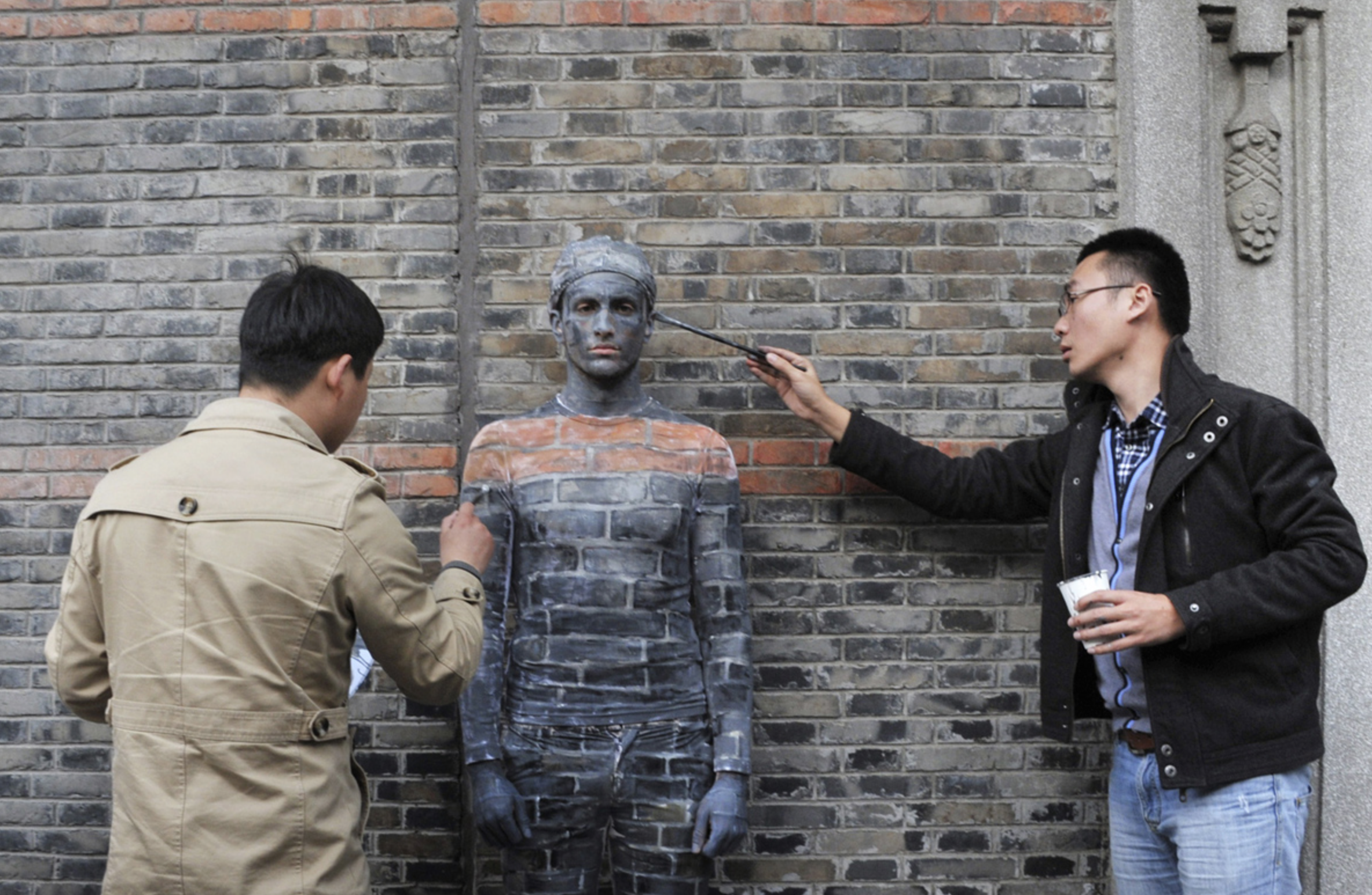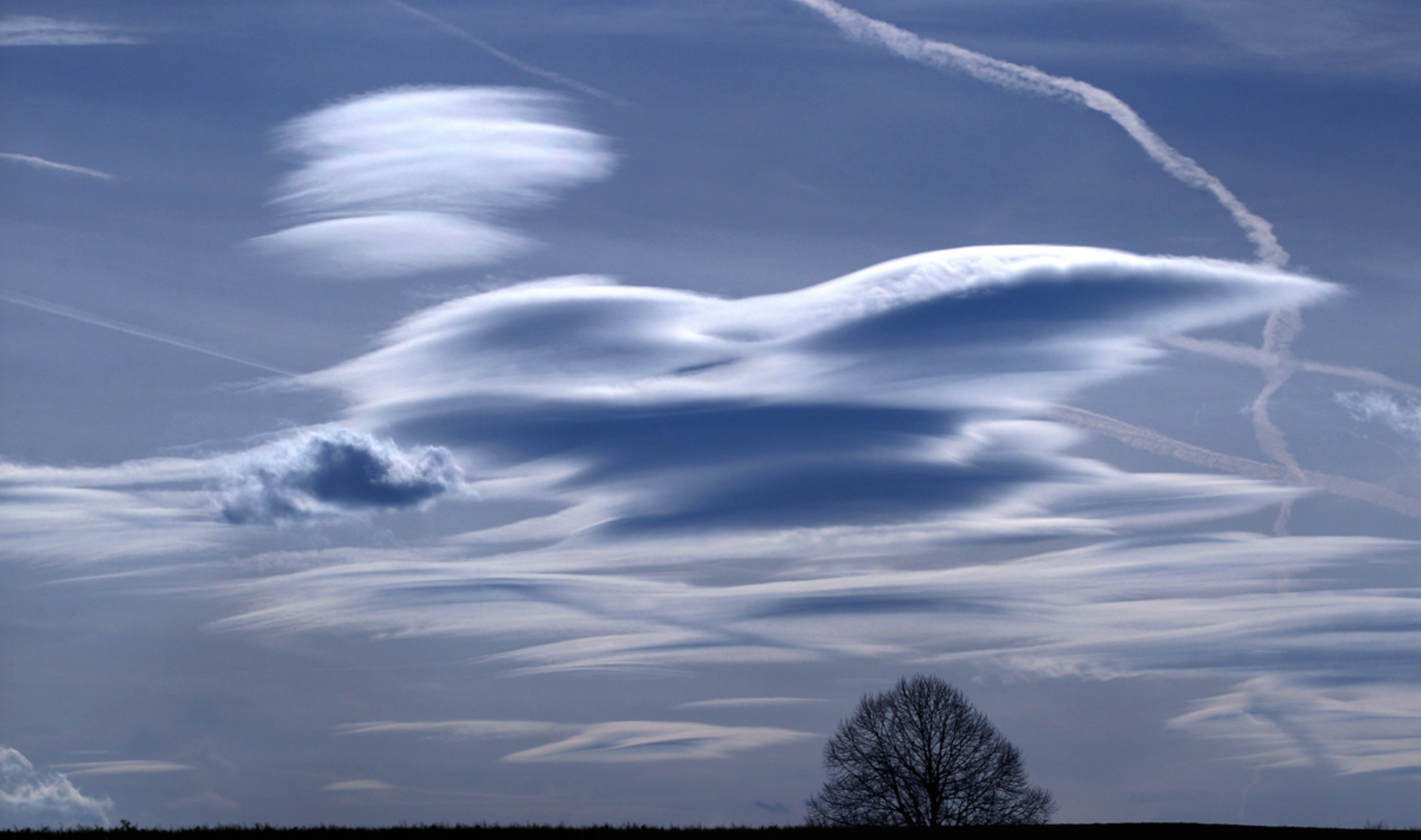Some of the time photography relays other arts, and much of the time it creates the artwork. Much of the time photography provides figural representation (that is, of persons and objects), and some of the time photography provides formal representation (that is, of abstract shapes and relationships). Figure and form are themselves relative terms, as is suggested by their Latin roots which refer to the not very different concepts of shape and mold. Figures include forms, and forms imply figures. In like manner, you could switch the terms “some” and “many” in the previous sentences and they still would be true. So it is that the transition between figure and form can be a source of invention in this public art.
This photo was taken in Shanghai, where local artists were painting a man to blend into a wall. The project is intended to raise awareness of the need to protect traditional structures. Good luck with that in capitalism’s newest laboratory, but along the way the photographer has captured a moment in which the figure is both there and not there, familiar and uncanny, still salient but fading into the background. We also can see that as the figure disappears, the human form does as well, to be replaced by the more impersonal formal relationships of bricks in a wall.
But not really. There are three figures in the photograph. The partial disappearance of the one is highlighted by, and highlights in return, the detailed, striking, robust presence of the other two. The photograph gives us a temporal (and ontological) succession from the wall to the somewhat abstract figure emerging out of it to the fully textured persons in front. Of course, it also is a recession, as the movement can go from person to (via the brushes) to figure to wall. It’s all the same to the camera.
So what is the point of the photograph? It is showing artists at work, so that seems to be the obvious answer, and one that is reinforced by including that architectural ornament in the upper right. Art and artistry are on display, both as a contemporary act and on behalf of a sense of tradition signified by the decorative fixture. The skill evident in the painting supposedly is more than is required to operate a camera, but this photograph demonstrates that each art is capable of achieving an aesthetic effect. The mimetic work of the painters is admirable, but the depiction of the painters is superb. With their intense concentration and arrested movement, they become aesthetic objects themselves, so much so that they could stand beside others like them in many a painting of the artistic life. Figural representation has triumphed after all, because of the continuities of form within the image and across the archive.
But not for long. I have included this second image not only because it is a beautiful study in natural forms, but because it happened to follow the first in the recent Photos of the Week slideshow at In Focus. There doesn’t seem to be any logic or narrative continuity to this new media genre, but the editors are making decisions of selection and placement, so something must lie below the surface. Once again we have a study in figure and form, although now with the ratios reversed. The tree is recognizable as a tree, and you can know that the shapes in the air are clouds (which they are), but now the term “clouds” seems a retroactive and all too limited description of what we see. The photograph presents beautiful, marvelous, enthralling shapes made up of sinuous contours and simple colors. The forms seem both dynamic and timeless, both solid and ethereal.
So what is the point of this photograph? Let me suggest that one answer comes from seeing it, as with the one above, as a transitional moment between figure and form. We see clouds and a tree, but also the vast, incomprehensible beauty of the natural world; and we see the vast, incomprehensible beauty of the natural world, and also clouds and a tree. Seeing either alone could be too much or too little to contemplate. The point would be that the beauty of the world is there to be seen, but to see it we have to pull it out of the background just enough so that it is visible yet not too familiar.
As photography is a public art, it depends on and expands an imaginative space, one that stays connected to but extends beyond ordinary vision to show what we have in common. That includes showing things like nature and tradition and beauty and art, for example. To see any of these things, figure is necessary, and form is essential.
Photographs by Reuters and Karl-Josef Hildenbrand/AFP/Getty Images.


[…] “There are three figures in the photograph. The partial disappearance of the one is highlighted by, and highlights in return, the detailed, striking, robust presence of the other two. The photograph gives us a temporal (and ontological) succession from the wall to the somewhat abstract figure emerging out of it to the fully textured persons in front. Of course, it also is a recession, as the movement can go from person to (via the brushes) to figure to wall. It’s all the same to the camera.” Robert Hariman • No Caption Needed […]